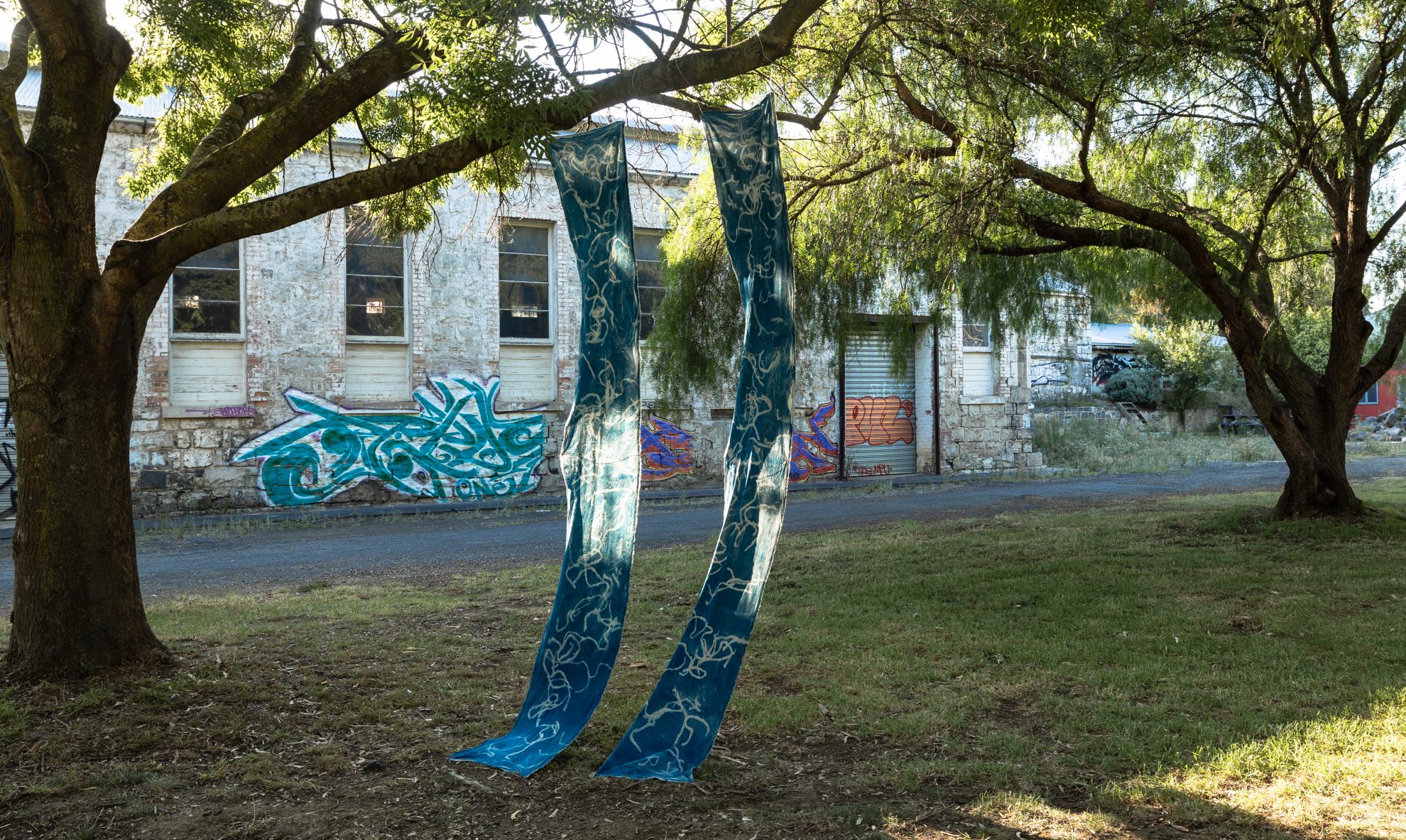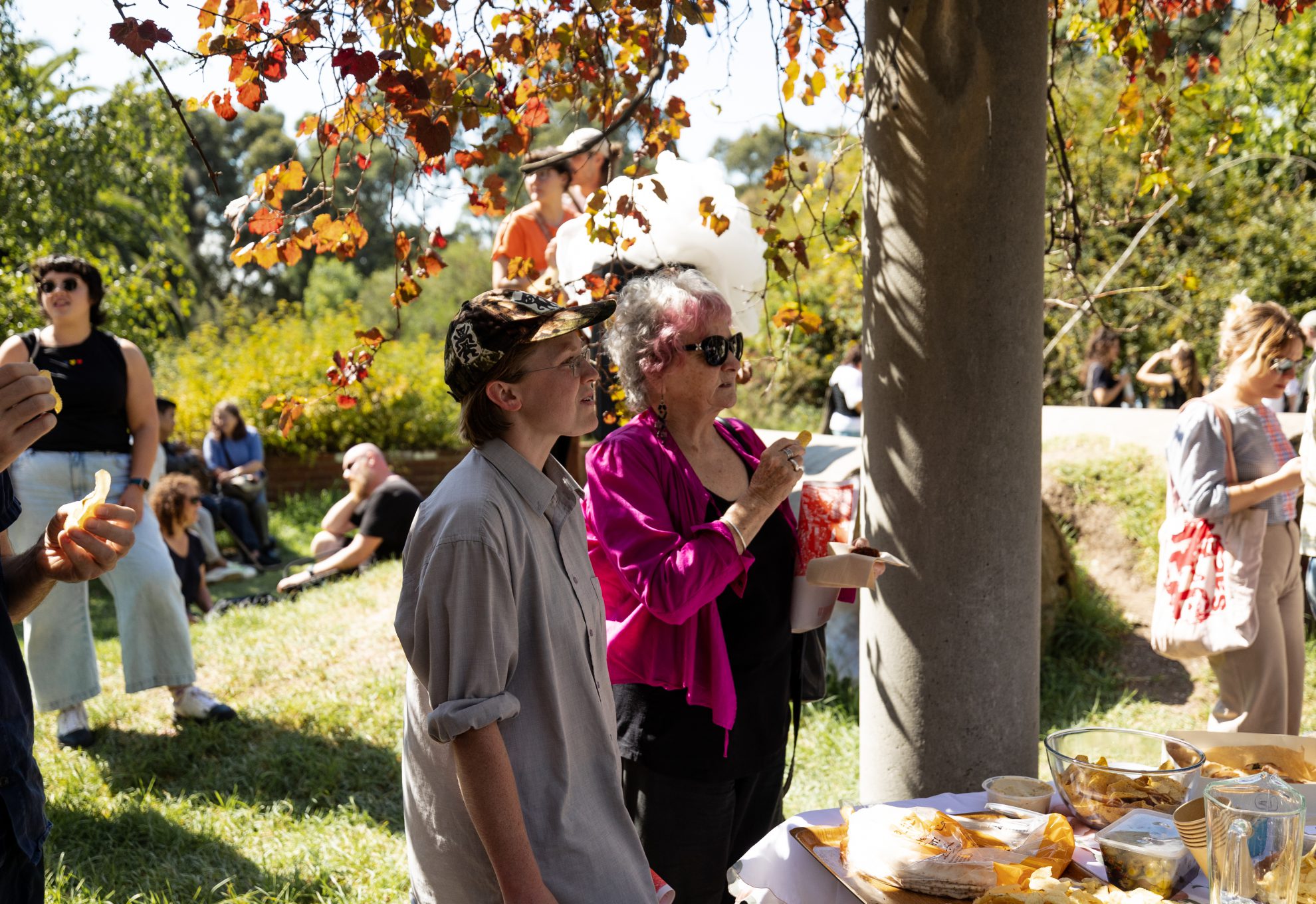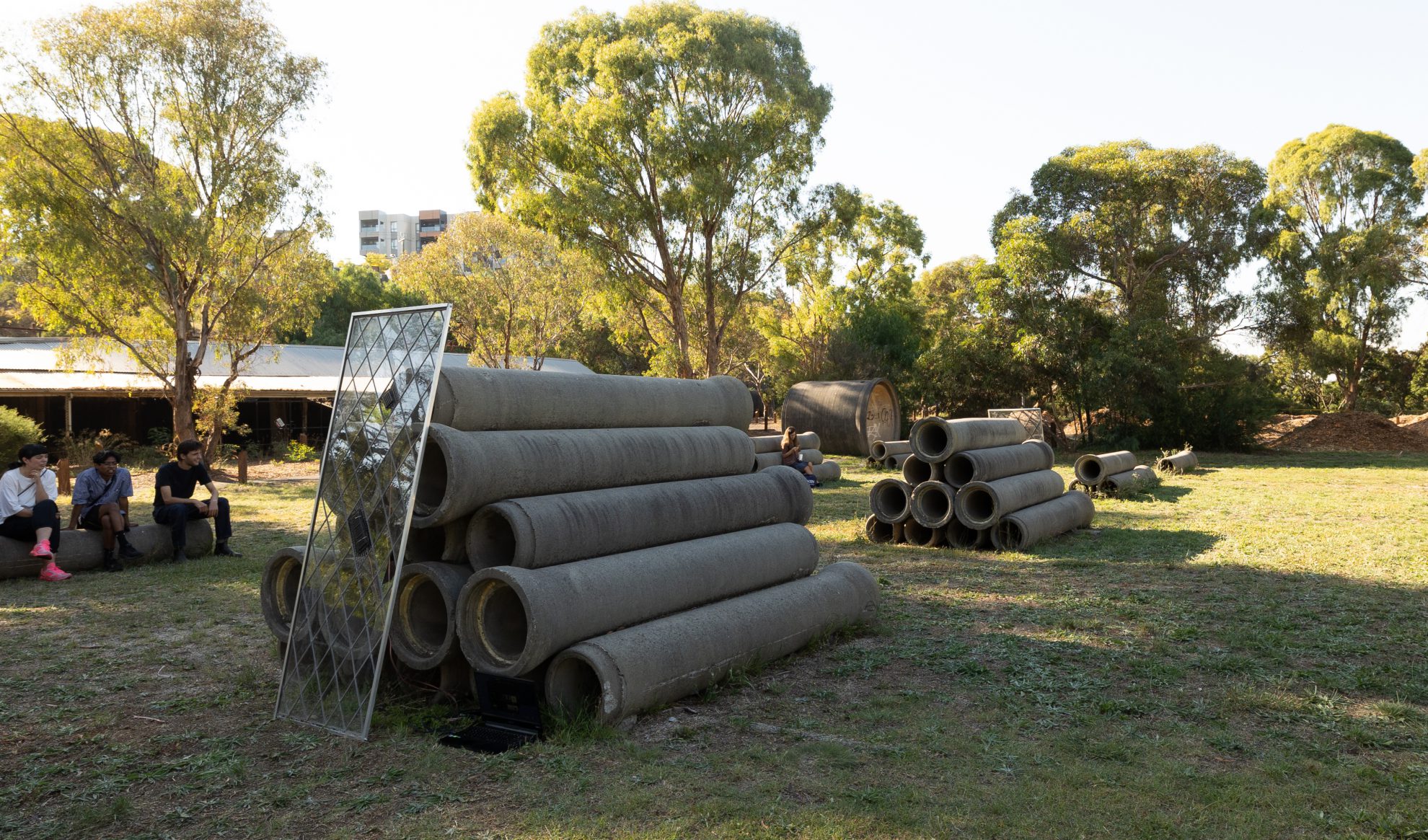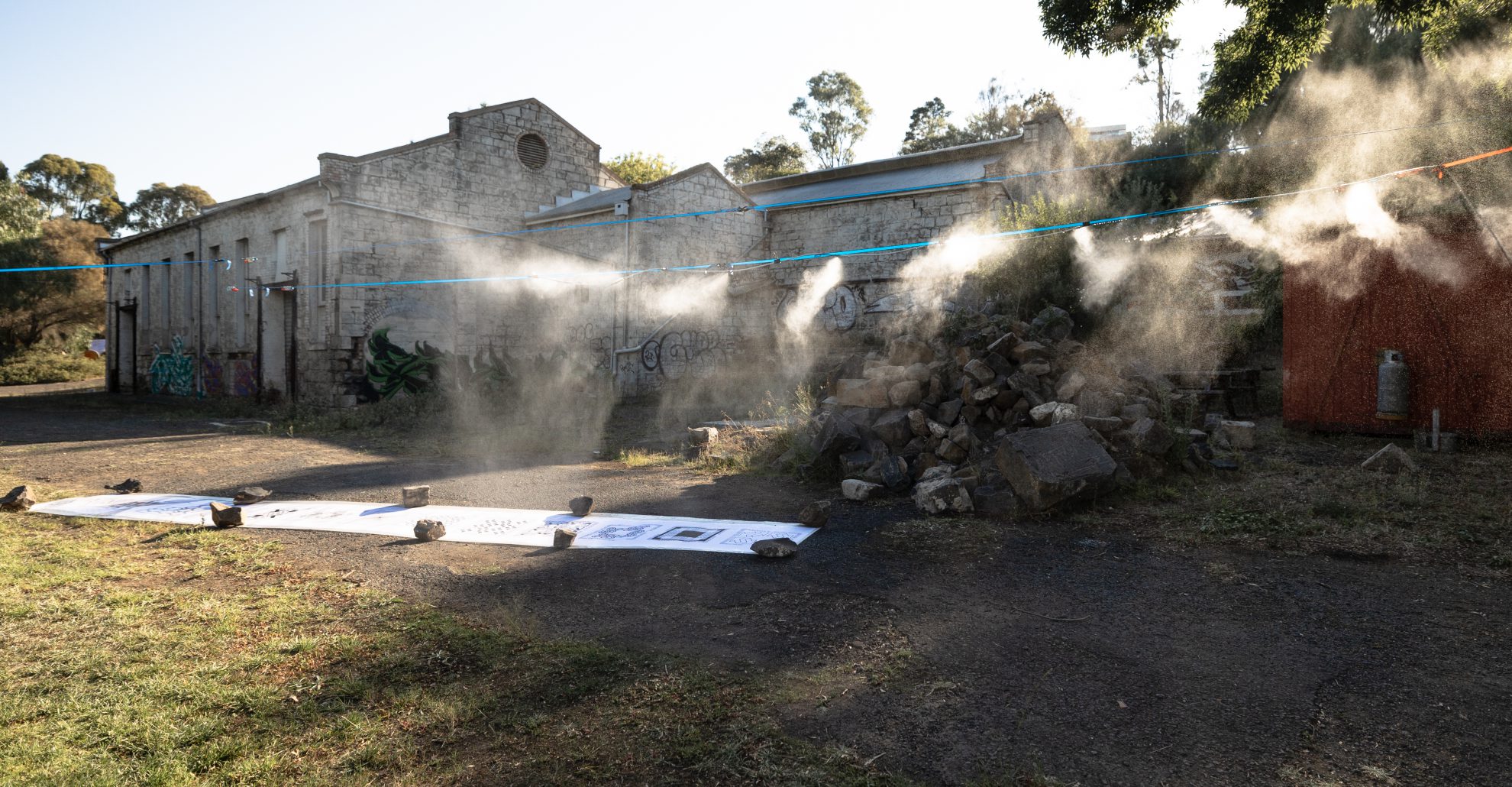Preface
Prior to the day of programming that was to listen, not to preserve, I had spent a year working with the Living Museum and therefore regularly spending time in Pipemakers Park, a few times a week outside of lockdowns. Commuting from the city, where I often walk in the highly manicured Carlton Gardens, to me Pipemakers Park felt remarkably wild for a municipal open space. It’s a place that rewards repeat visits and careful observation as much as happenstance. Over days, weeks, and seasons I got to know regulars such as the Park Ranger and some of the Friends of Maribyrnong Valley gardeners. Over quiet months, artist Libby McKinnon started appearing in the garden – tending to her mosaics there, replacing chipped tiles first installed three decades ago.
A few times I chased kids off the roof of the two-storey heritage bluestone building in the park, worried they would fall through. Other times I caught them throwing rocks onto the roof or at the windows. At one stage the building surface was bombed with graffiti and in the following months this accumulated exponentially – a lot of messy tags but also some large-scale elaborate designs that obviously took some time. One sunny Saturday afternoon I heard the unmistakable scchhh sound of a spray can. Sol and I interrupted, saying ‘hey! please don’t do that, you know, it’s a heritage building’. The tagger was apologetic but also quite boastful and pointed out all the works that were his, before taking off on his bicycle.
Cycling groups huddled in the Pioneer Women’s Shelter when it rained.
On warmer days a musician practiced the saxophone, sitting atop one of the concrete tables in the ‘Workers Garden’ – where remnants of concrete table settings made by factory workers in the 1950s remain. In late summer artist-in-residence Julie Shiels addressed this picnic furniture by installing clear resin tops on the broken stool stumps, her minimal intervention making the concrete remnants functional as seats again. Earlier, Shiels had planted herbs in the upturned pipe planters, originally used for this purpose by the workers to enhance their routine of fishing and barbequing together after work on Fridays.
An ice cream van started visiting the carpark, a happy sign as the weather improved and lockdowns lifted. Parents had cut through cyclone fencing around the new adventure playground to let bored kids in before construction was quite finished.
The most frequent visitors to the park – rain or shine – were men looking for brief encounters and meetups in the abandoned ‘Top Factory’. Part of the historic Hume Pipe company, the open structure of the 1940s Top Factory was partially conserved in the late 1990s. No longer accessible to the public, the site surely remains one of the most aesthetically significant heritage-listed ‘beats’ in town, surviving both the emergence of Grinder and the development of a busy children’s playground on the other side of the carpark. Like the rest of the park, this site is an occasional target of fires and vandalism, and my hairdresser tells me that some users of the beat take it upon themselves to quietly repair any damage to the structure.
On my first day at the museum, we found a young woman living in the unused far end of a bluestone building in the park. An international student abandoned by any institutional support systems in the wake of COVID, it seemed this had been her best option for a relatively safe and functional home for most of the summer. Museum committee members readily stepped into the role of social safety net.
Local dancer Jonathan Sinatra stumbled upon the bluestone building one day when the doors were open, then started bringing friends back to make improvisational movements in the park and around the buildings. They met Libby in the garden and soon developed a project together.
I pointed out the missing bronze dolphin statue to everyone who visited.
—-




